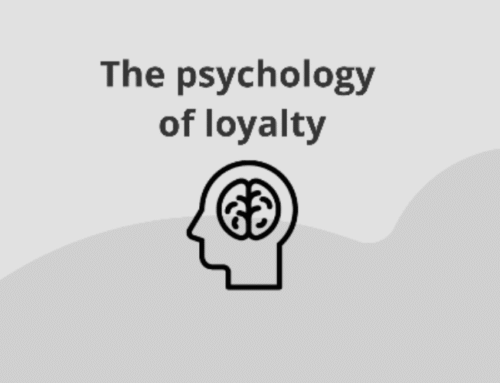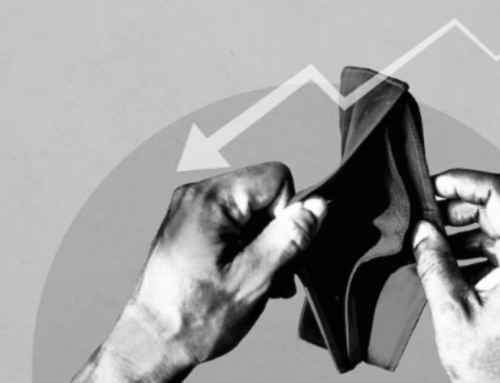How Loyalty Programs Make Money
Since its birth, loyalty programs have seen a surge in popularity as they offer a tangible way to encourage repeat business and foster customer loyalty. Additionally, technological advancements have made it easier for companies to implement and manage effective programs, further driving their adoption.
But how do loyalty programs work, and how do they make money? Let’s break down the strategic and financial mechanics behind these powerhouse perks.

1. Customer Retention: The Key to Sustainable Growth
A vital component of any successful loyalty program business model is customer retention. Retention drives profit because returning customers spend more per transaction and are more likely to try new products or services offered by your brand.
|
Customers enrolled in loyalty programs are inclined to make repeat purchases, often increasing their worth to a business (CLV). The more loyal customers you retain, the more sustainable your revenue streams become.
2. Increased Customer Spend: More Value
Loyalty programs create a strong incentive for customers to spend more to reach specific rewards or milestones. This psychological principle, known as the “goal gradient effect,” suggests that people are more motivated to complete a task the closer they reach their goal.
For example, a customer enrolled in a points-based loyalty program may spend more frequently to earn enough points for a discount or a free product. This can drive a significant uptick in average order value (AOV), directly increasing revenue.
Moreover, these programs can be structured to reward higher spending. Many businesses offer tiered programs, where customers can unlock better rewards as they spend more. Paid loyalty programs are best suited to brands with a cohort of loyal customers who buy relatively frequently.
3. Data-Driven Personalization: Turning Insights into Profit
One of the most powerful benefits of a loyalty program is the treasure trove of data it generates. By tracking customer purchases and preferences, you can segment your customer base and deliver highly personalized marketing campaigns.
Personalization drives both engagement and revenue. When customers feel understood and valued, they are more likely to respond positively to targeted offers. For example, sending tailored product recommendations or personalized discounts based on a customer’s buying behavior can significantly boost conversion rates. Personalized experiences often lead to higher sales, creating a more profitable relationship with each customer.
Loyalty programs also help you identify which products or services are most popular among your members. By analyzing this data, you can optimize your product offerings, promotions, and pricing strategies to align with customer preferences, maximizing profitability.
4. Reducing Churn: Minimizing Lost Revenue
Customer churn—when customers stop buying from your business—is a costly problem. A loyalty program creates an emotional bond between customers and your brand, which can help prevent them from switching to competitors.
By keeping existing customers happy and engaged, these programs can significantly reduce churn, translating into substantial cost savings.
5. Cross-Selling and Upselling: Maximizing Sales Opportunities
Loyalty programs provide a direct channel to cross-sell and upsell your products. Once you have built trust with your loyal customers, it’s much easier to introduce them to complementary products or higher-value items. This increases the customer’s total spending and maximizes the revenue potential of each transaction.
For instance, a customer who purchases coffee from your cafe may be more willing to try your branded merchandise if they know it will earn them extra loyalty points. Similarly, you can use loyalty programs to promote premium versions of products, encouraging customers to trade up to more expensive offerings.
6. Brand Advocacy: Turning Customers into Promoters
A well-designed rewards program incentivizes repeat business and encourages customers to spread the word about your brand. Word-of-mouth marketing is one of the most effective and low-cost forms of advertising. By offering referral rewards or bonuses for social media sharing, leaving reviews, celebrating a birthday, or gamification, you can leverage your loyal customer base to attract new clients without the high costs of traditional marketing campaigns.
When customers are part of a loyalty program, they’re more likely to become brand advocates, recommending your business to friends, family, and colleagues. This creates a powerful network effect that amplifies your marketing reach and introduces more paying customers.
7. Boosting Cash Flow: Driving Immediate Sales
While loyalty programs reward customers in the long term, they also have the potential to drive immediate sales. Many businesses use promotions like double points days or exclusive access to member discounts during slower sales periods. This strategy creates urgency and motivates customers to act, driving short-term cash flow.
Some programs, such as prepaid memberships (like Amazon Prime or Costco), generate upfront revenue while fostering long-term loyalty. These memberships create a consistent income stream while incentivizing customers to get the most out of their investments.
Key Takeaways: A Profitable Win-Win
The benefits of loyalty programs for customers and businesses are endless. These programs offer a wealth of opportunities to improve customer service, retain customers, increase customer spending, reduce churn, and foster brand advocacy. Delivering personalized customer experiences and leveraging data can create stronger customer relationships while driving measurable financial gains.
For small family-owned businesses, loyalty programs level the playing field by providing tools to compete with larger companies, whereas large corporations can further optimize customer lifetime value and brand loyalty. Whether you run a small retail shop or a global enterprise, implementing a loyalty program can transform your customer base into your most valuable asset—one that keeps on giving.
With the right strategy in place, loyalty programs aren’t just a cost—they’re a revenue-generating powerhouse that fuels growth and ensures long-term profitability.
How bLoyal Can Help
At bLoyal we believe that every business, from corner coffee shops to large corporations, deserves the power of robust rewards programs.
Our comprehensive cloud-based loyalty software empowers businesses to maximize the benefits of their customer loyalty programs. Some features include:
- Flexible points programs: Customize your customer loyalty program to suit your business needs.
- Personalized offers: Deliver targeted promotions based on customer preferences and behavior.
- Gamification elements: Increase engagement and excitement with fun and interactive features.
- Advanced analytics: Gain valuable insights into customer behavior and loyalty metrics.
Seamless integration: Easily integrate our platform with your existing systems.




